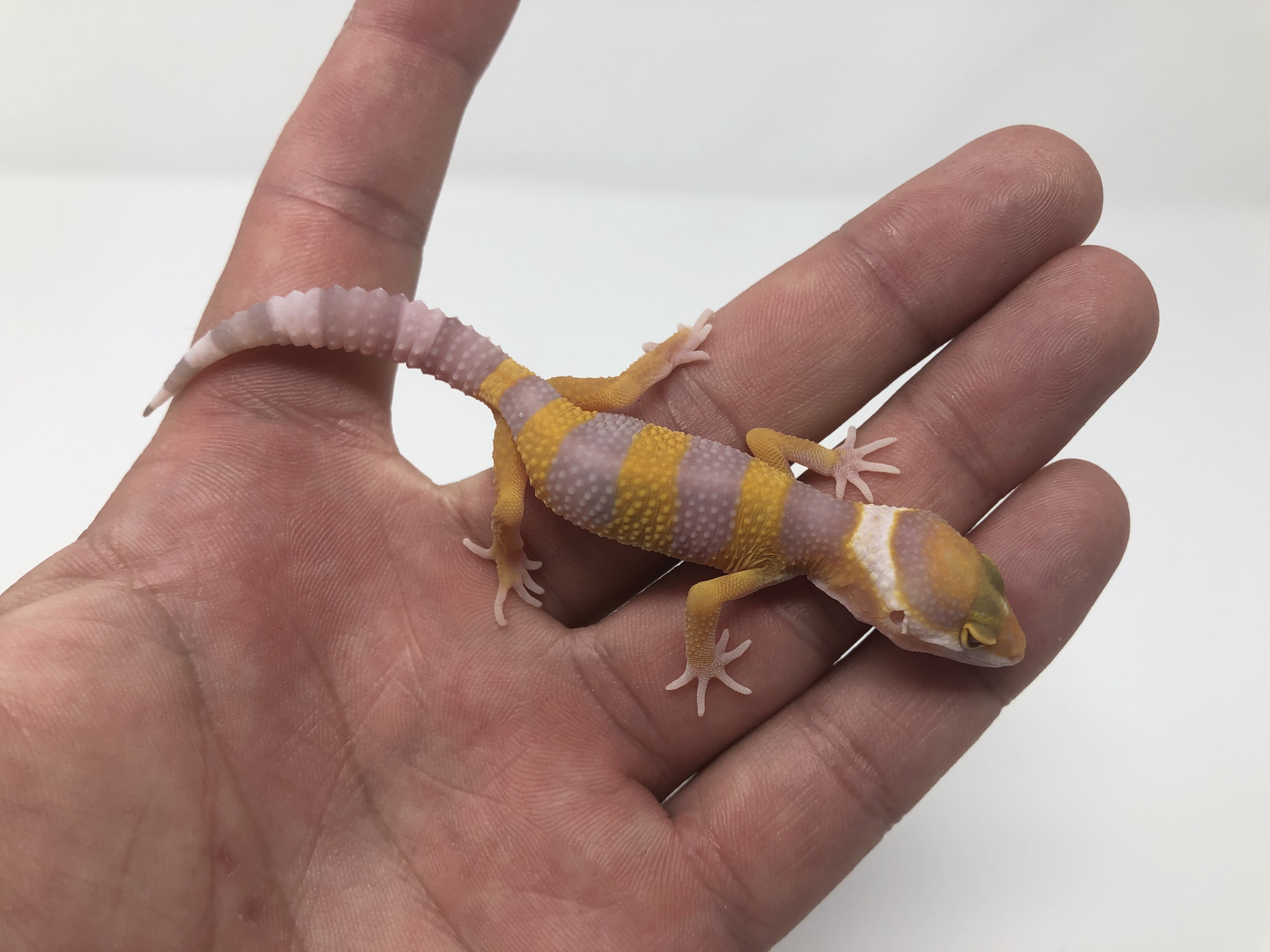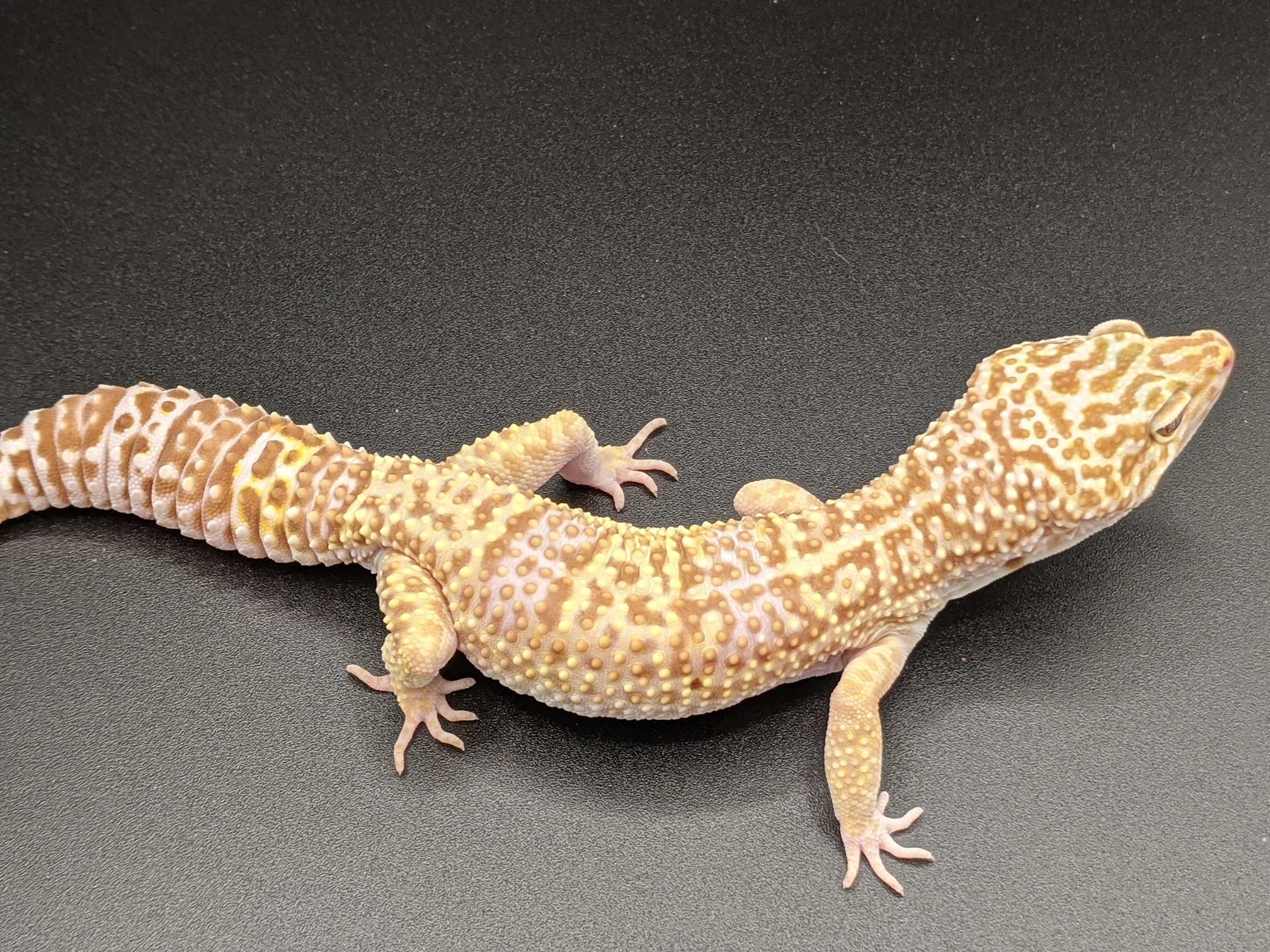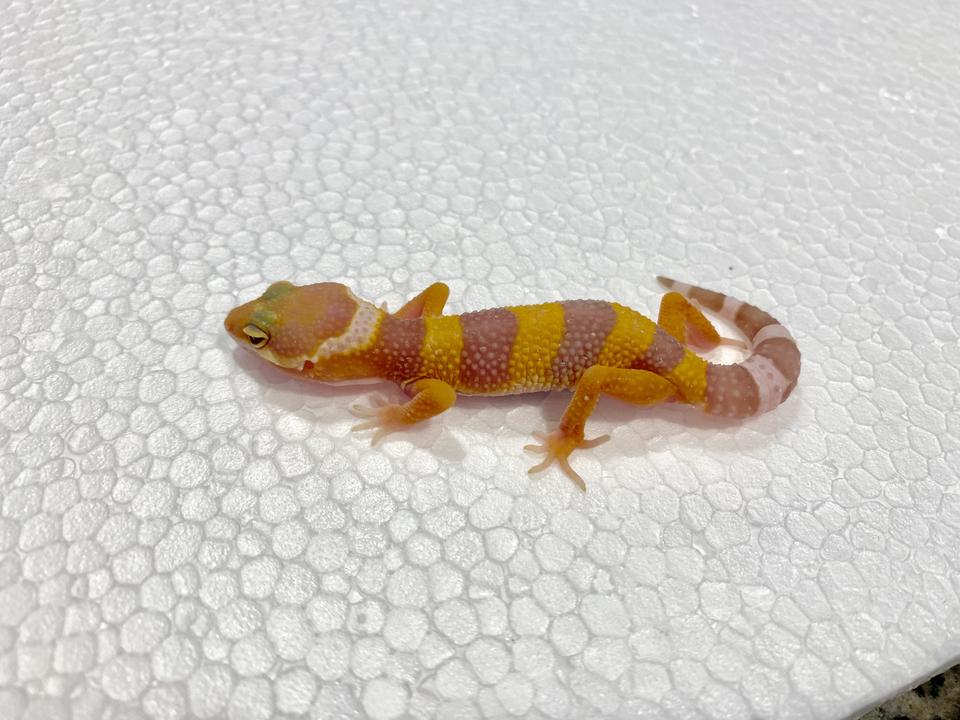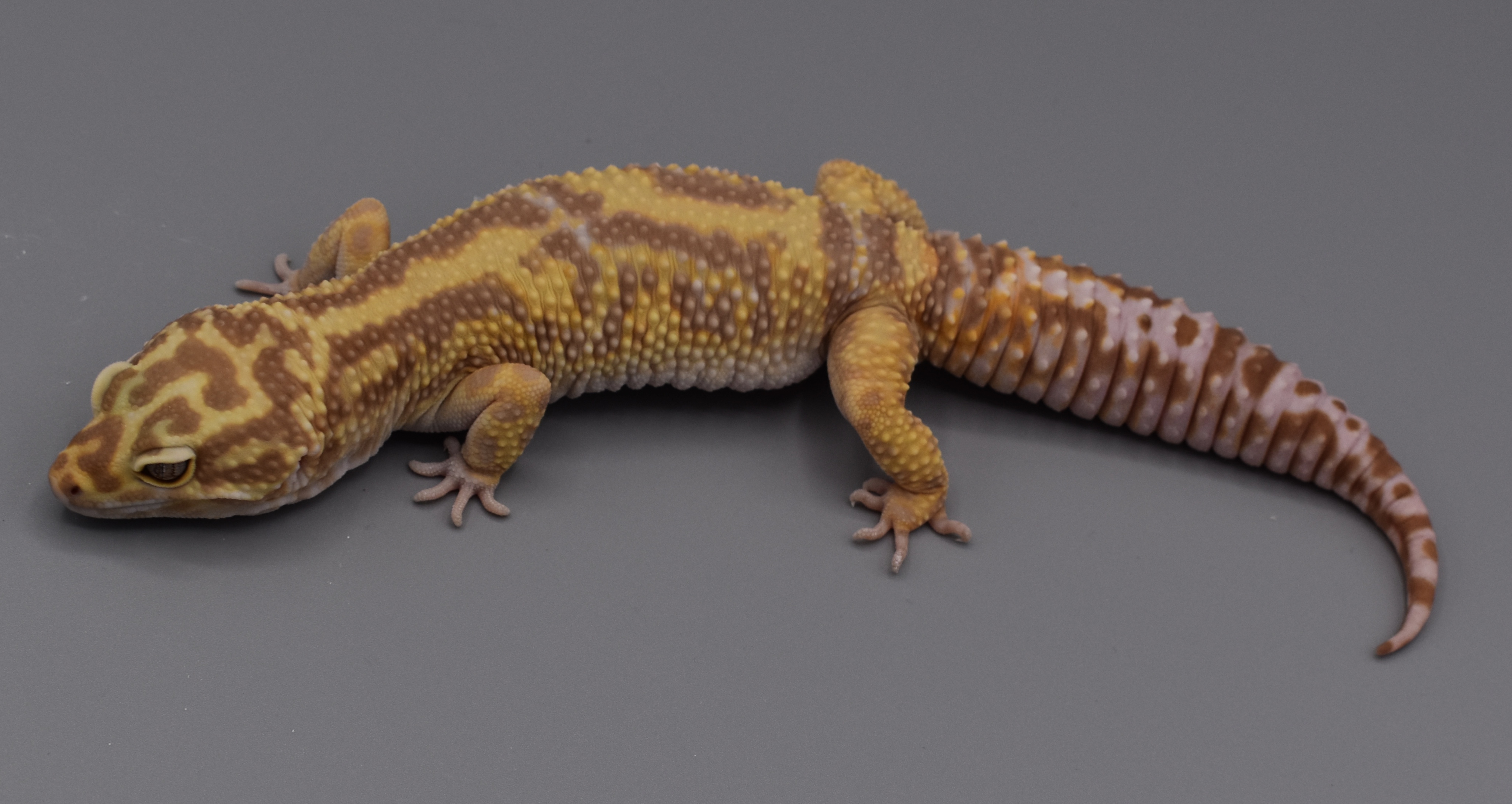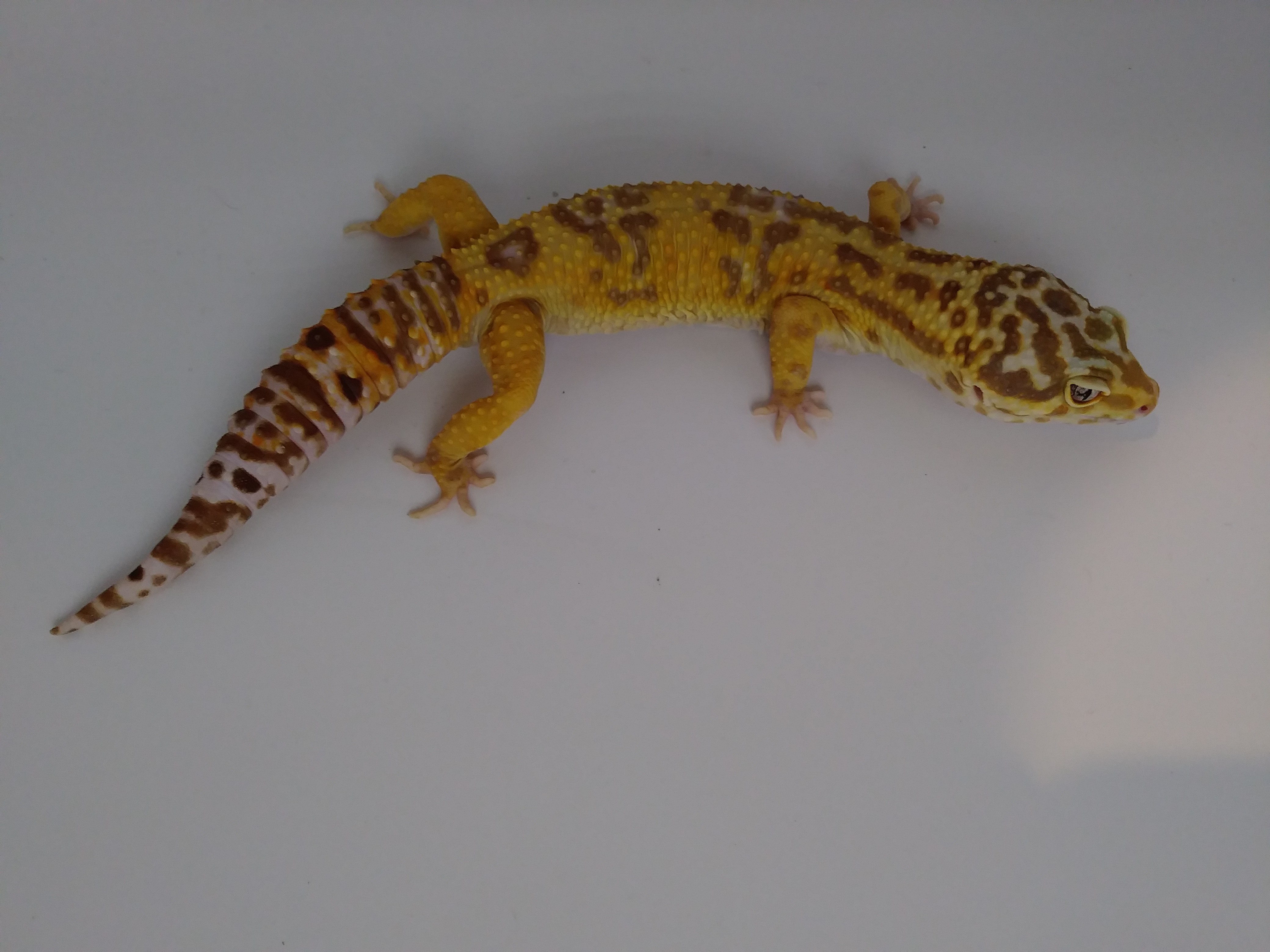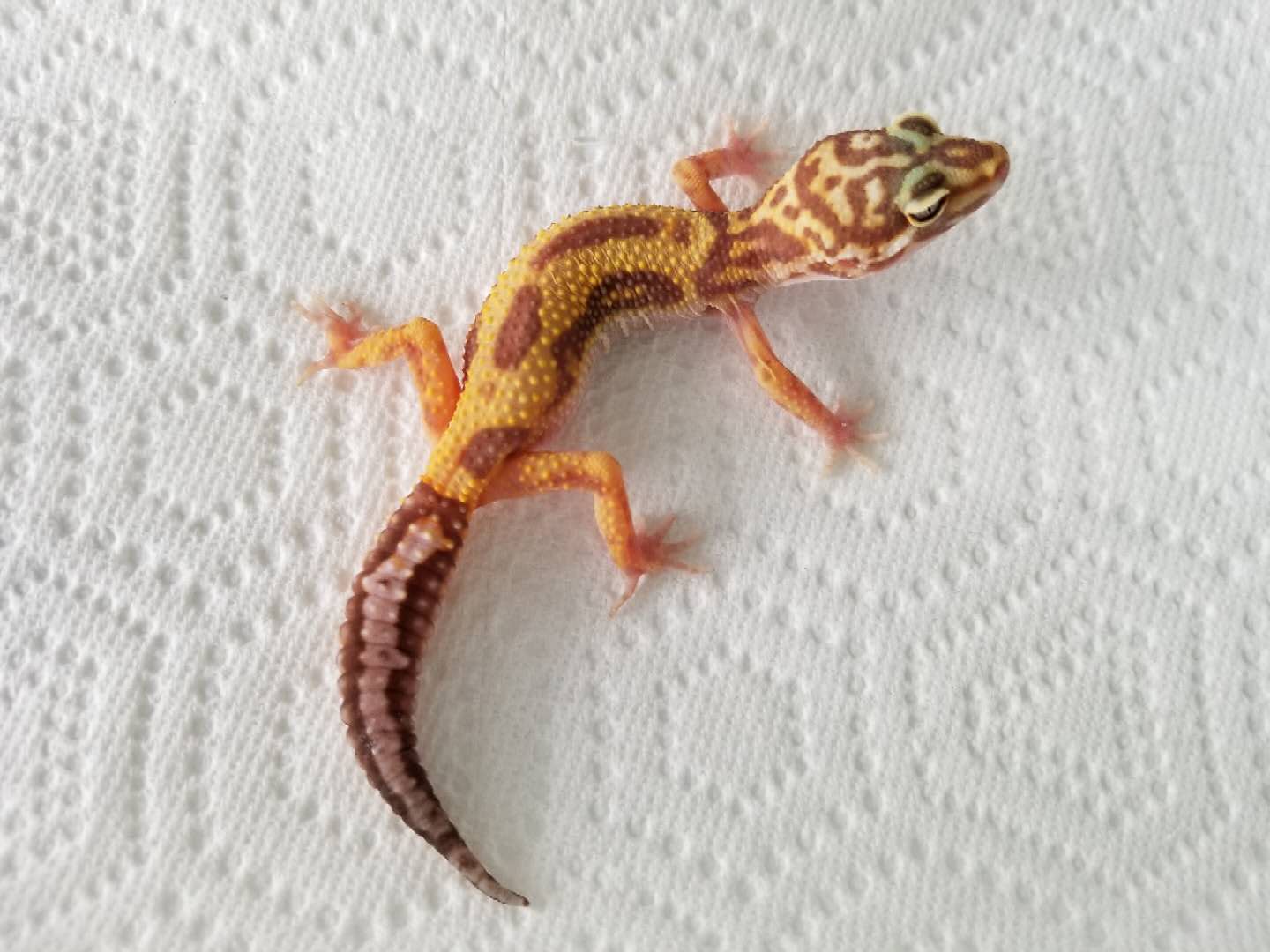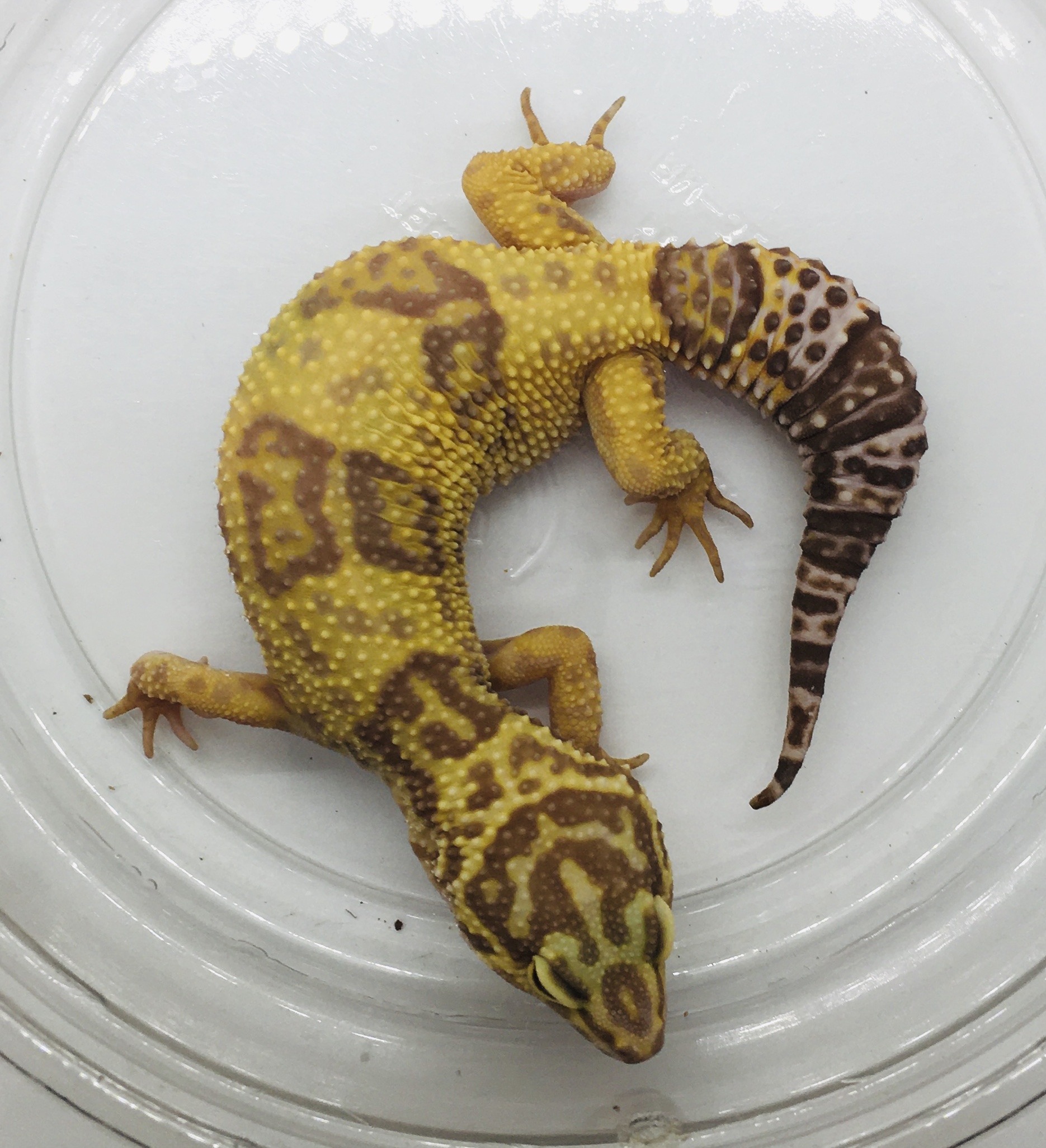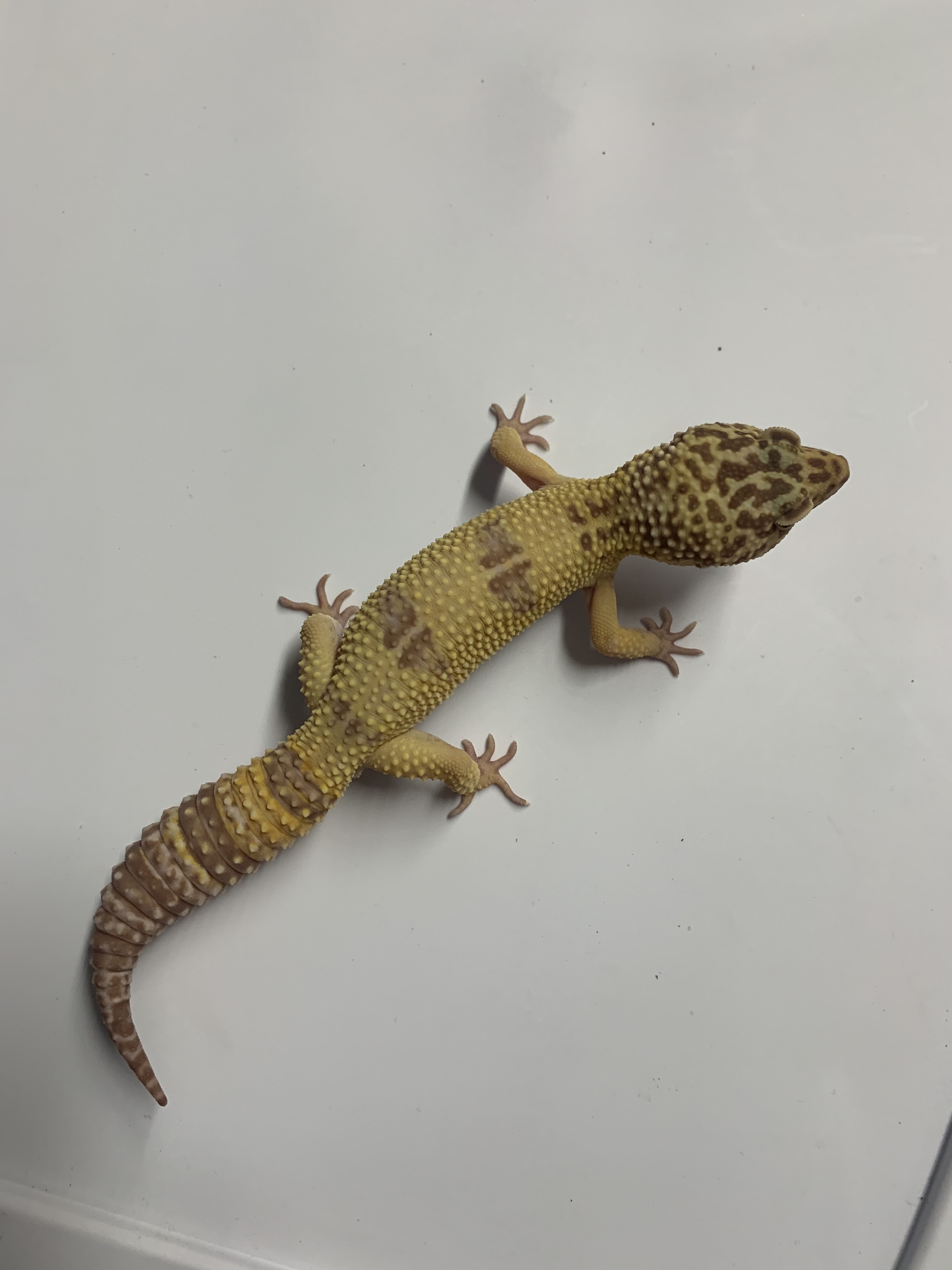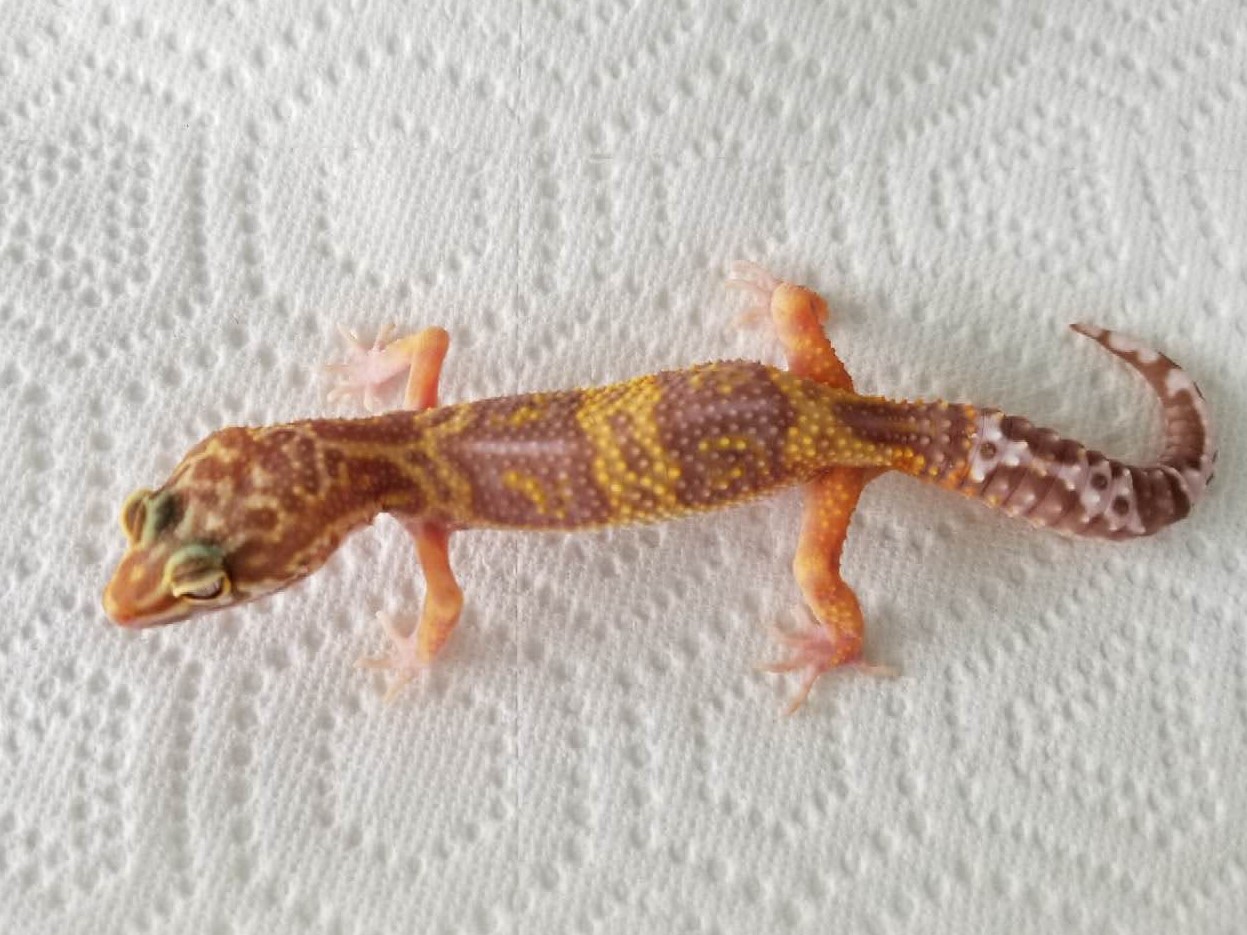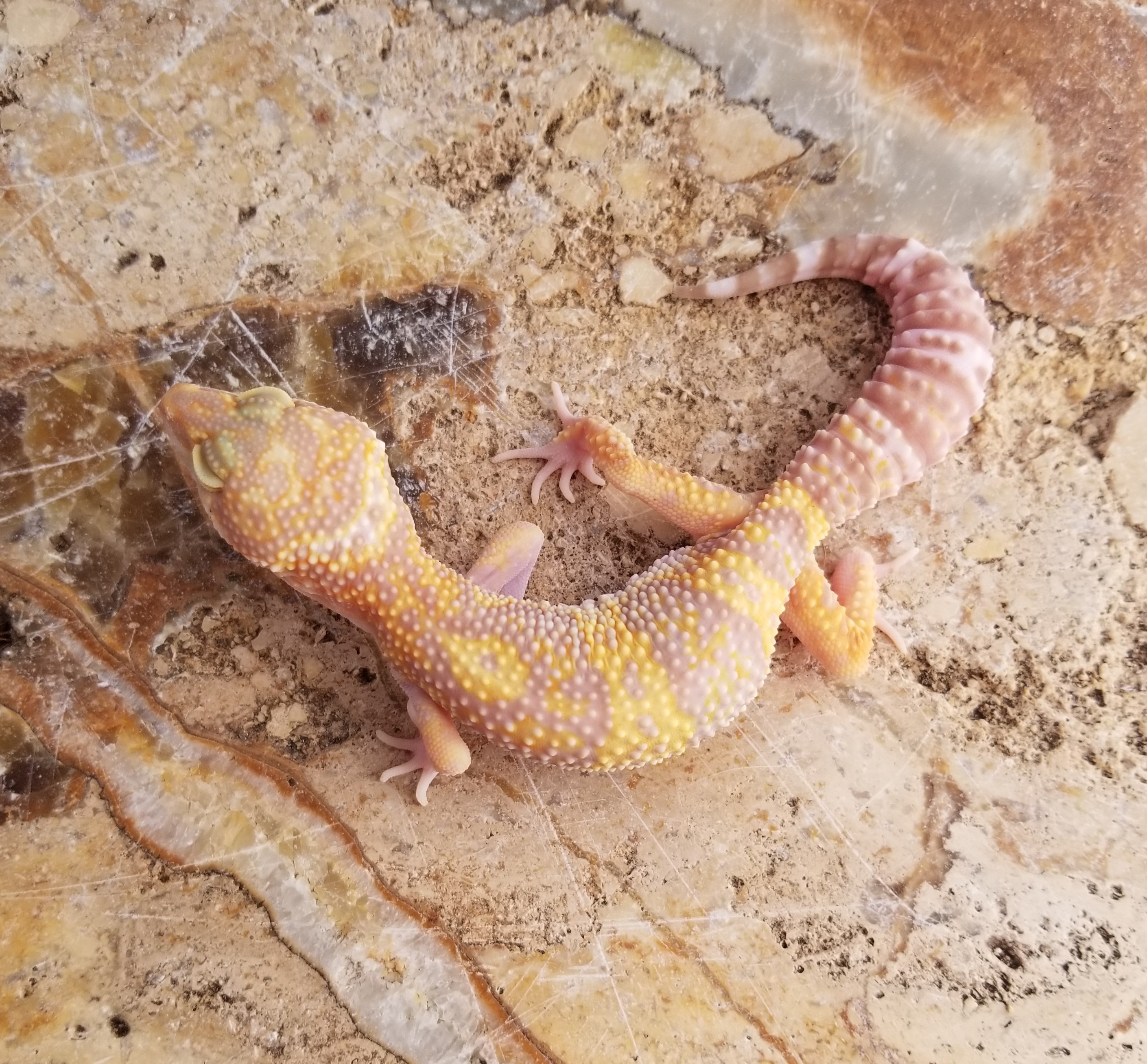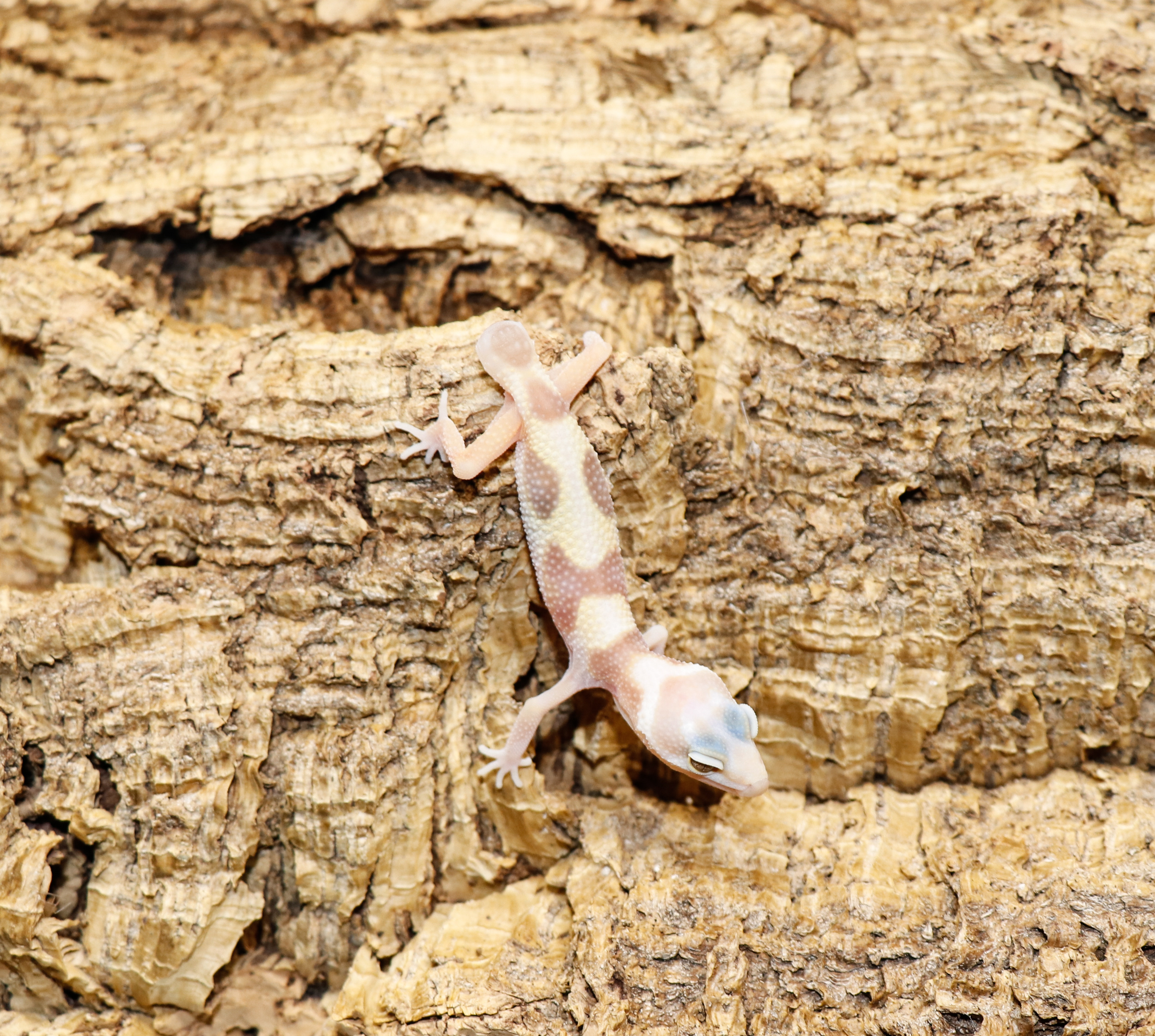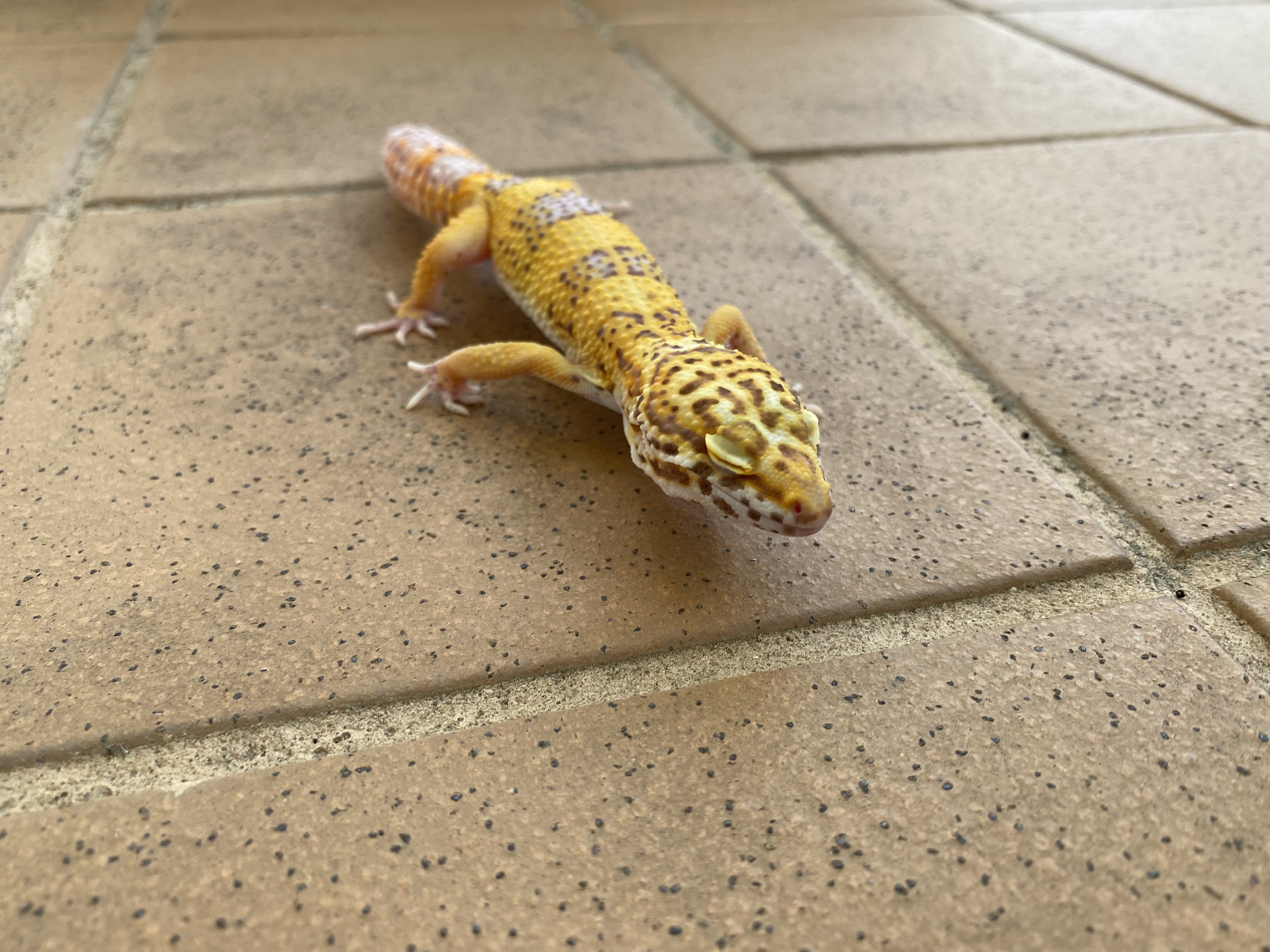Albino (Tremper)
Type: Recessive
First Produced By: Ron Tremper
Aliases: Tremper Albino, Albino Tremper, Texas Strain, Texas Albino
Issues: Photophobia
First Produced In: 1996
Availability: Common
Last Updated: 2023-04-13
Do you have any suggestions or corrections for this article?
Click here to contribute feedback
About
Three distinct forms of albinism are well-established in Leopard Geckos. All three are tyrosinase positive forms, and are so similar in appearance they cannot be separated visually with 100% certainty. It is absolutely critical to be aware which line specimens to be used for breeding programs are from, use of more than one type will result in normal appearing geckos, and if bred together, these may then produce offspring of either or both types. That can be a confusing mess to sort out later! [1]
Leopard geckos have three types of pigmentation, contained in three different types of cells: melanophores, which contain black pigment (melanin); xanthophores, which contain red, yellow or orange pigment; and iridophores, which contain crystalline materals that reflect and refract light.
Albinism is usually when animals cannot produce melanin because they lack the essential enzyme tyrosinase. Albinism in leopard geckos is apparently slightly different, because they are not true albinos but rather extreme amelanistics, which roughly means that they produce virtually no melanin, but still have the potential capability to do so (because all strains do in fact have tyrosinase). Since it only affects the melanin pigmentation, albino leos can still show orange, yellow and brown coloring. [2]
Tremper Albinos, also known as Texas Strain Albinos, were the first of the three strains of Albinos to be discovered in 1996 by Ron Tremper. Tremper Albinos can range in colors from dark browns to light yellows, oranges, and pinks. The Tremper Albino eyes tend to be a silver color with red veins.
Since Tremper Albinos were the first strain of leopard gecko Albinos to be discovered, they are very common and usually the first strain to be worked with when crossing into other morphs. For example, Ron Tremper has developed the R.A.P.T.O.R. with the Tremper strain. He has now made the Diablo Blancos and is working on Super R.A.P.T.O.R.s (Super Snow RAPTORs). [3]
The second simple recessive mutation to occur was a beautiful form of albinism. Popularized and brought to market by Ron Tremper, this line is now referred to as the ‘Tremper’ Albino, to differentiate it from the other types of albinos that have since popped up in the market place. It was the first of the albinos to be produced. Note that the different types (Tremper, Las Vegas, and Bell) have been given different names for a reason - each mutated allele resides at a distinct locus. Thus, they are NOT genetically compatible when bred together. Maintain each line of albino separate and keep good records, or a genetic mess may result!
Some keepers believe the three types of albinos can be separated visually based on overall appearance. This is not accurate! There is much variation in overall appearance of these albinos, based on the underlying naturally occurring variations present in all populations. As a result, a near complete overlap in appearances is present within large samples of albinos, rendering accurate visual separation of the types impossible.
As mentioned above, the overall appearance of any given albino specimen can be affected by a number of factors. Many breeders are carefully selecting for specimens with a given appearance and crossing their albino specimens to selectively bred color variations to create a host of new ‘morphs’. New names for such specimens are created almost daily by breeders in an effort to gain a foothold in the marketplace. Most of these name appear and then quickly vanish, but several seem to persist, based on acceptance by the public and common usage. [4]
Issues
Photophobia
While the word photophobia literally translates to a "fear of light”. Its not actually that you are scared of light, but instead, are incredibly sensitive to it. Animals with albinism experience photophobia due to the lack of pigment in the iris, which does not allow the eyes to filter out light.
History
In September 1996, I received a phone call that changed the leopard gecko industry forever. Two clients of mine reported that they had hatched an albino leopard gecko (Eublepharis macularius) from a wild-imported female. I requested a photo. Sure enough, it was an albino leopard gecko. I was amazed and excited.
It turned out that the albino leopard gecko was female, Rosie, and her sibling was a normal-looking male leopard gecko. I kept in touch with the owners of this rare gem for a year and helped them with breeding ideas, genetics and a marketing plan.
Bubba the leopard gecko fathered Ron Tremper’s line of albinos. Tremper achieved success with this breeding project in April 1999. Ron Tremper - 2011 - REPTILES magazine [5]
Ron Trempers LG Pro:
“In the 80s I saw hundreds of wild imported leopard geckos. This is a photo of ‘Bubba’ whose mother was imported gravid in 1996, so he is 100% ‘wild type’ and he matches the look of all the imports I have seen. The most important thing about this gecko is that he was carrying the gene for the original Tremper albinos. Every Tremper albino and all Tremper albino combination morphs are descended from this one gecko. Additionally, he was also carrying the gene for the Giant/Super Giant mutations. Tens of thousands of leopard geckos worldwide are directly related to this special gecko, which died in 2013.” [6]
Appearance
Head
As adults they have silver eyes with red veins.
All three forms of albinism have an effect on eye coloration, although not as consistently as breeders would prefer. Some, but not all, hatchlings have distinct eyes, with reddish pupils and a pink colored iris. For reasons not understood, some hatchlings will have very dark eyes, almost normal appearing. It has been postulated by some that temperature plays a role in embryonic eye color development. Others feel some hidden genetic trait is at work.
Regardless of the reason, it is important to understand that this occurs and that it can be even more pronounced when combined with additional mutations. It is also important to realize that this red coloration will be lost as the animals mature. With growth, the iris thickens and the pinkish color of blood vessels previously showing through the thin cell layers of the iris will be obscured by the solid light golden color of the much thicker mature iris. [7]
Body
Tail
The tail follows the same colouration as the rest of the body.
Proven Lines
No known proven lines
Related Traits
Combos
- APTOR (Albino (Tremper) 100% Het Eclipse)
- RAPTOR (Albino (Tremper) Eclipse)
- Blazing Blizard (Albino (Tremper) Blizzard)
- Diablo Blanco (Albino (Tremper) Blizzard Eclipse)
- Dreamsickle (Enigma Snow (Mack) Albino (Tremper) Eclipse)
- Ember (Albino (Tremper) Eclipse Murphy Patternless)
- Hybino (Albino (Tremper) Super Hypo)
- Nova (Enigma Albino (Tremper) Eclipse)
- Phantom (Snow (Tug) Albino (Tremper) Carrot Tail Super Hypo Tangerine)
- Snow Glow (Snow (Mack) Albino (Tremper) Carrot Tail Super Hypo Tangerine)
- Snowflake (Snow (Mack) Albino (Tremper) Eclipse Murphy Patternless)
- Snowglow (Snow (Mack) Albino (Tremper) Carrot Tail Super Hypo Tangerine)
- Sun Glow (Albino (Tremper) Super Hypo Tangerine)
- Sunglow (Albino (Tremper) Super Hypo Tangerine)
- Sunrise (Albino (Tremper) Blizzard Tangerine)
- Super Nova (Super Snow (Mack) Enigma Albino (Tremper) Eclipse)
- Tangelo (Albino (Tremper) Tangerine)
- Tremper Blazing Blizard (Albino (Tremper) Blizzard)
- Tremper Hybino (Albino (Tremper) Super Hypo)
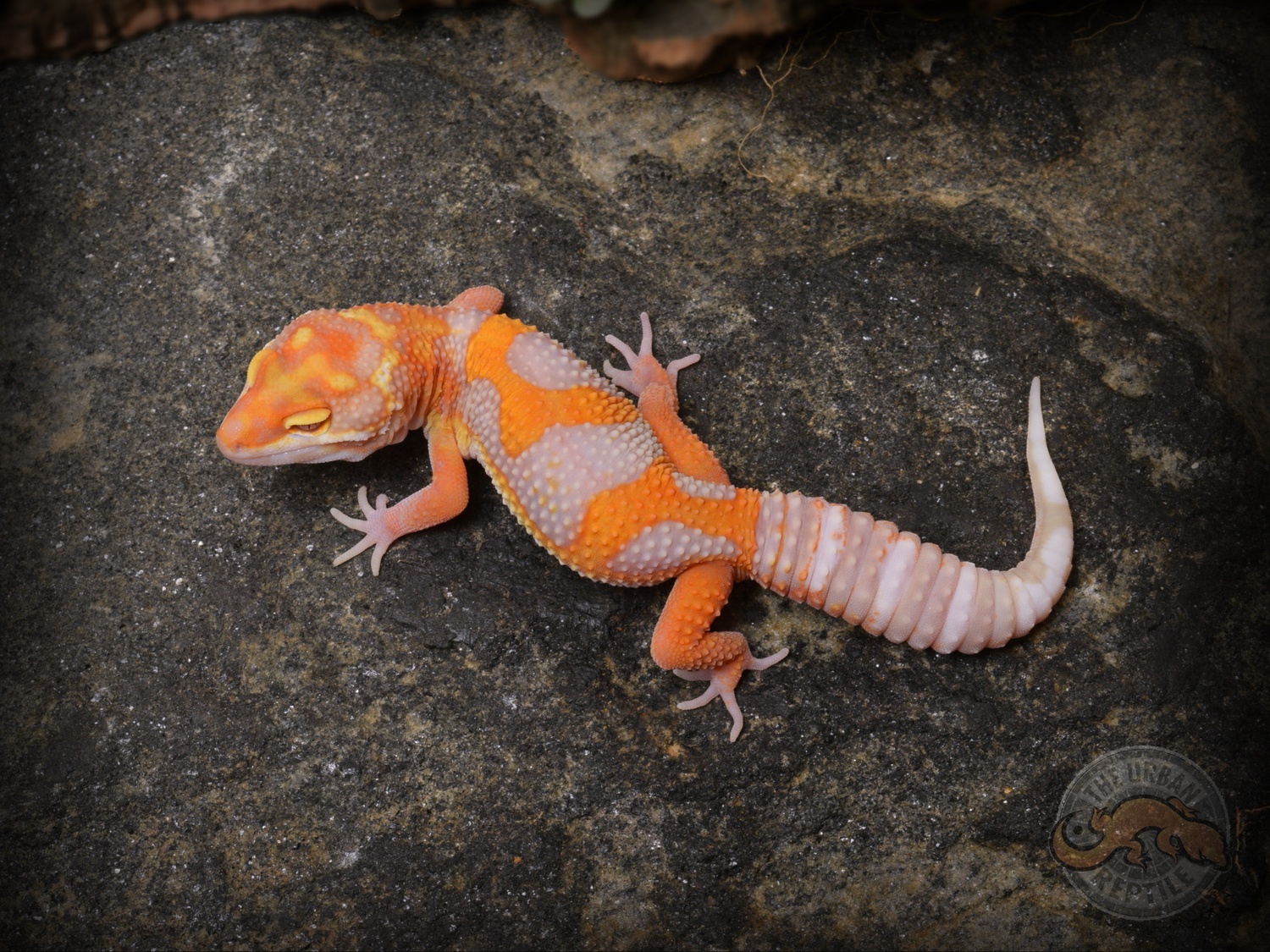
Blood Emerine Sunglow Leopard Gecko by The Urban Reptile
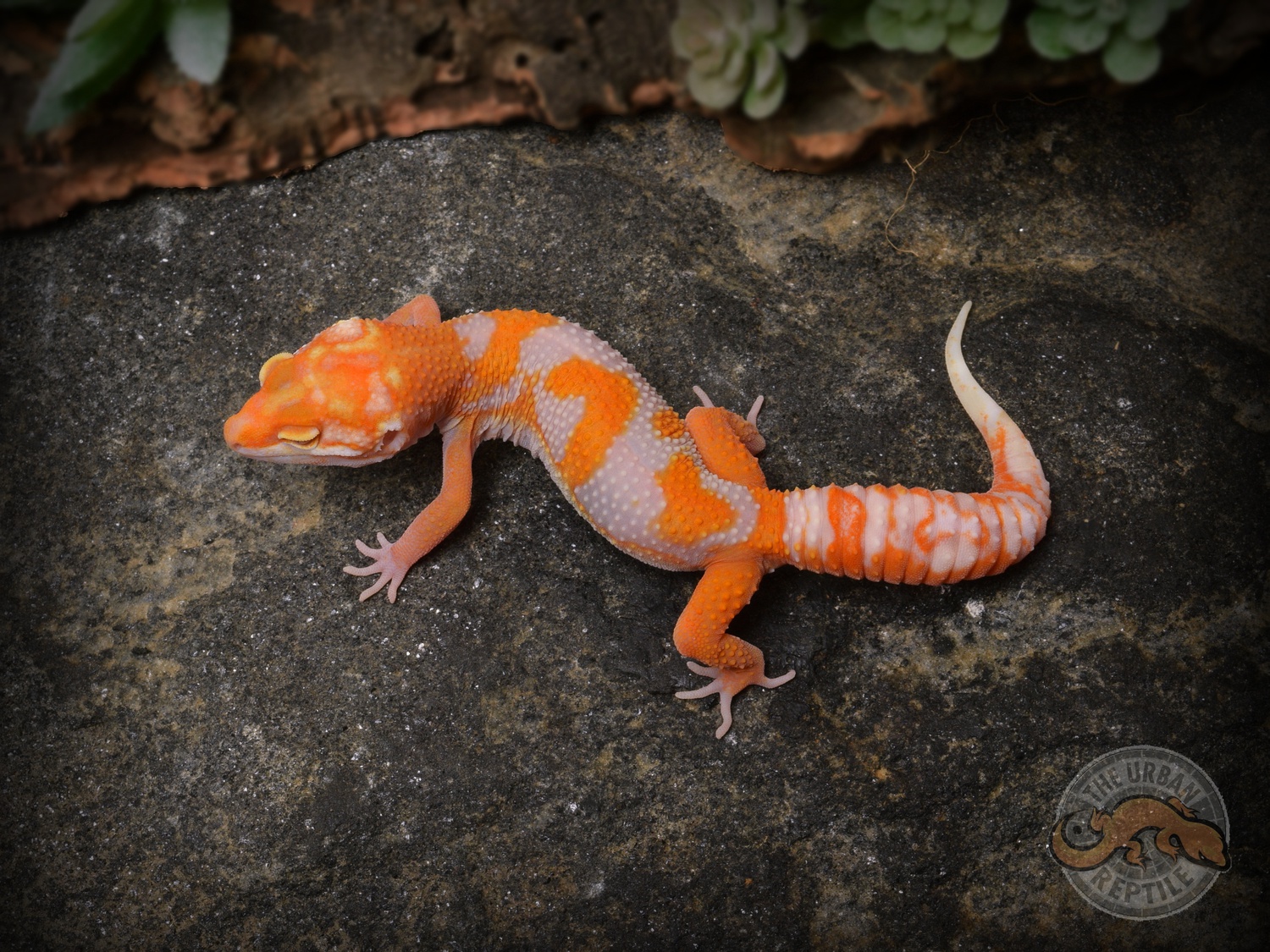
Blood Emerine Sunglow Leopard Gecko by The Urban Reptile
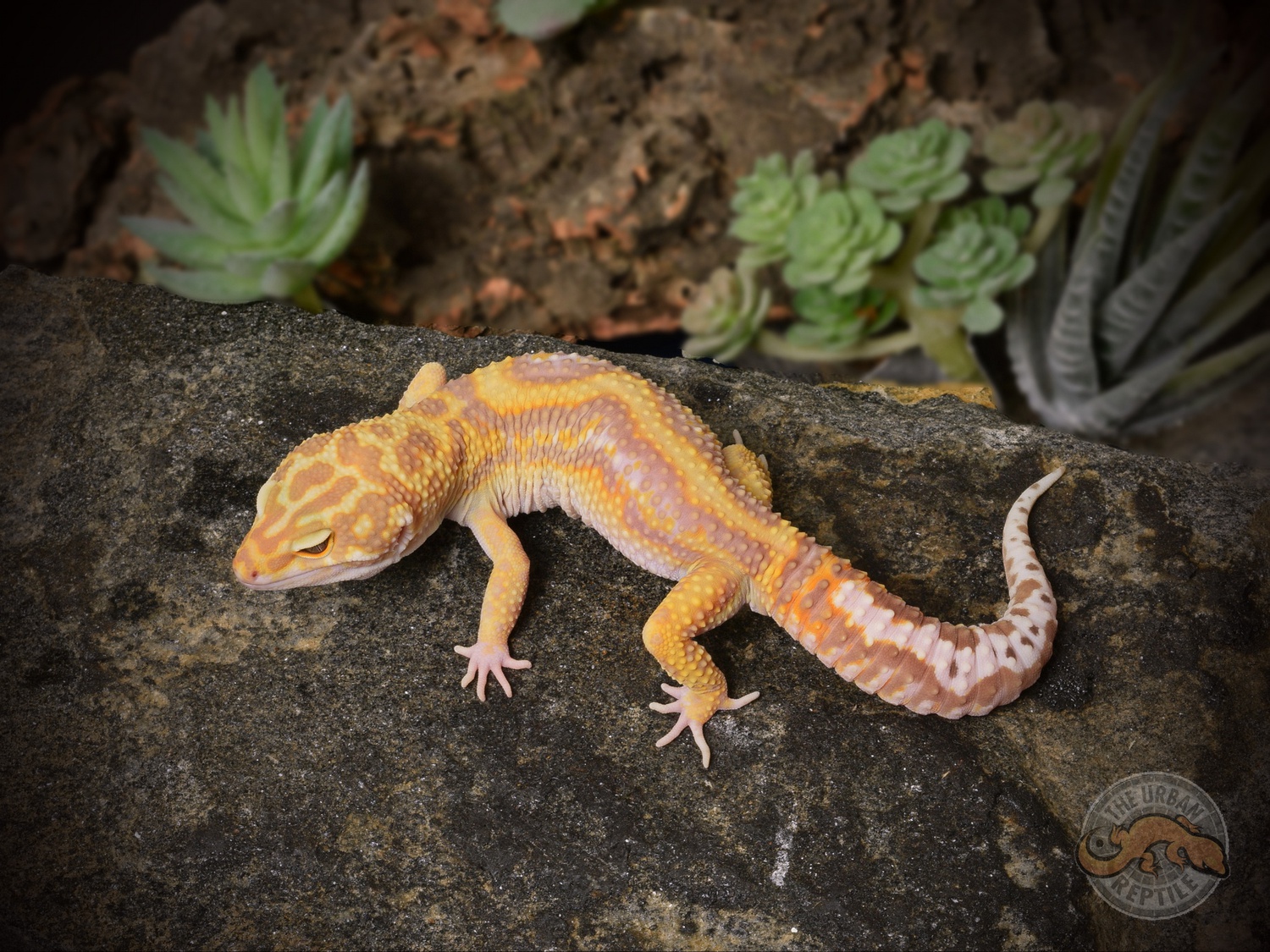
Tremper GIANT Jungle Leopard Gecko by The Urban Reptile

White & Yellow Tremper Albino Red Stripe Leopard Gecko by The Urban Reptile
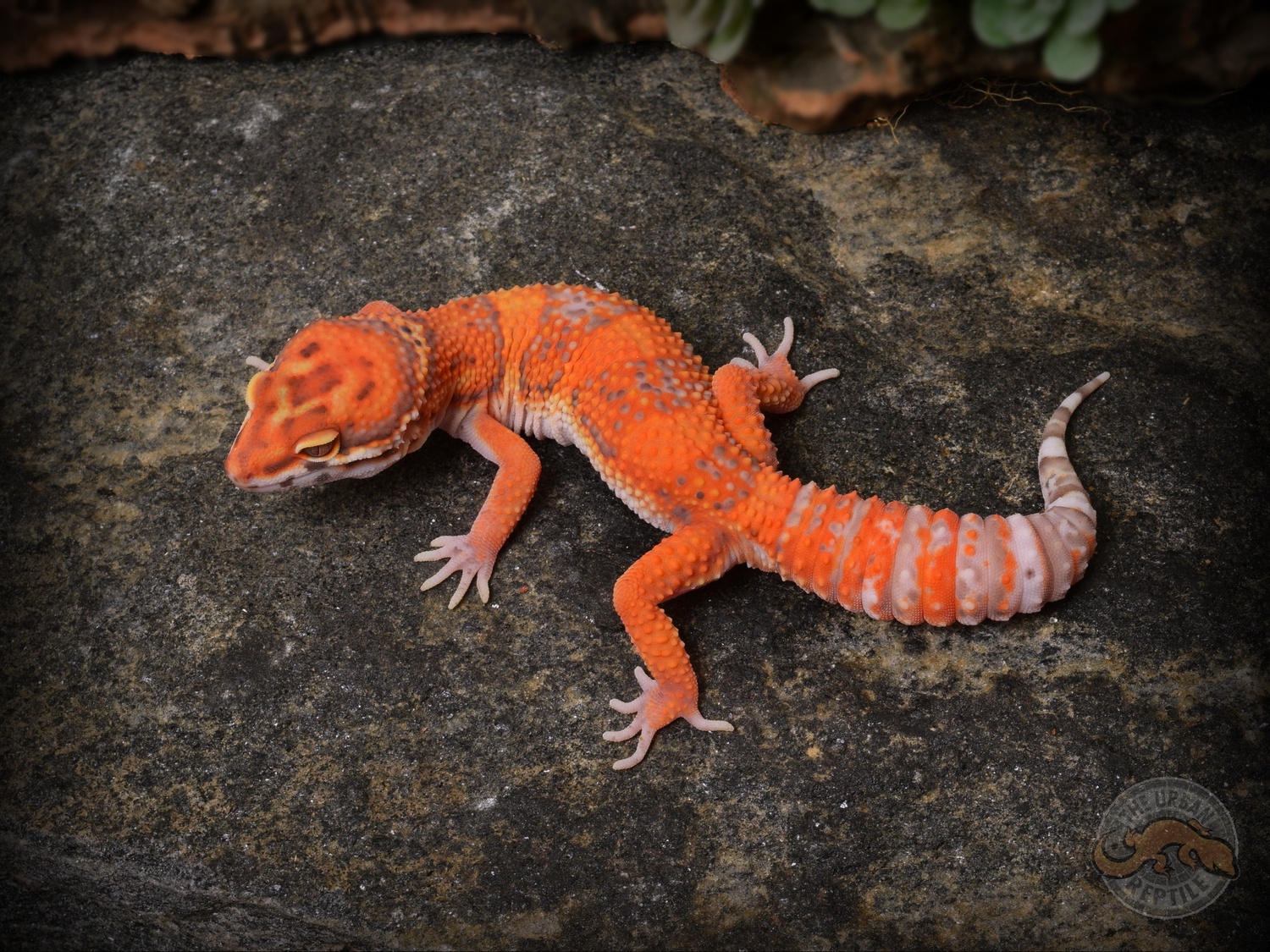
Blood Tremper Sunglow Leopard Gecko by The Urban Reptile
